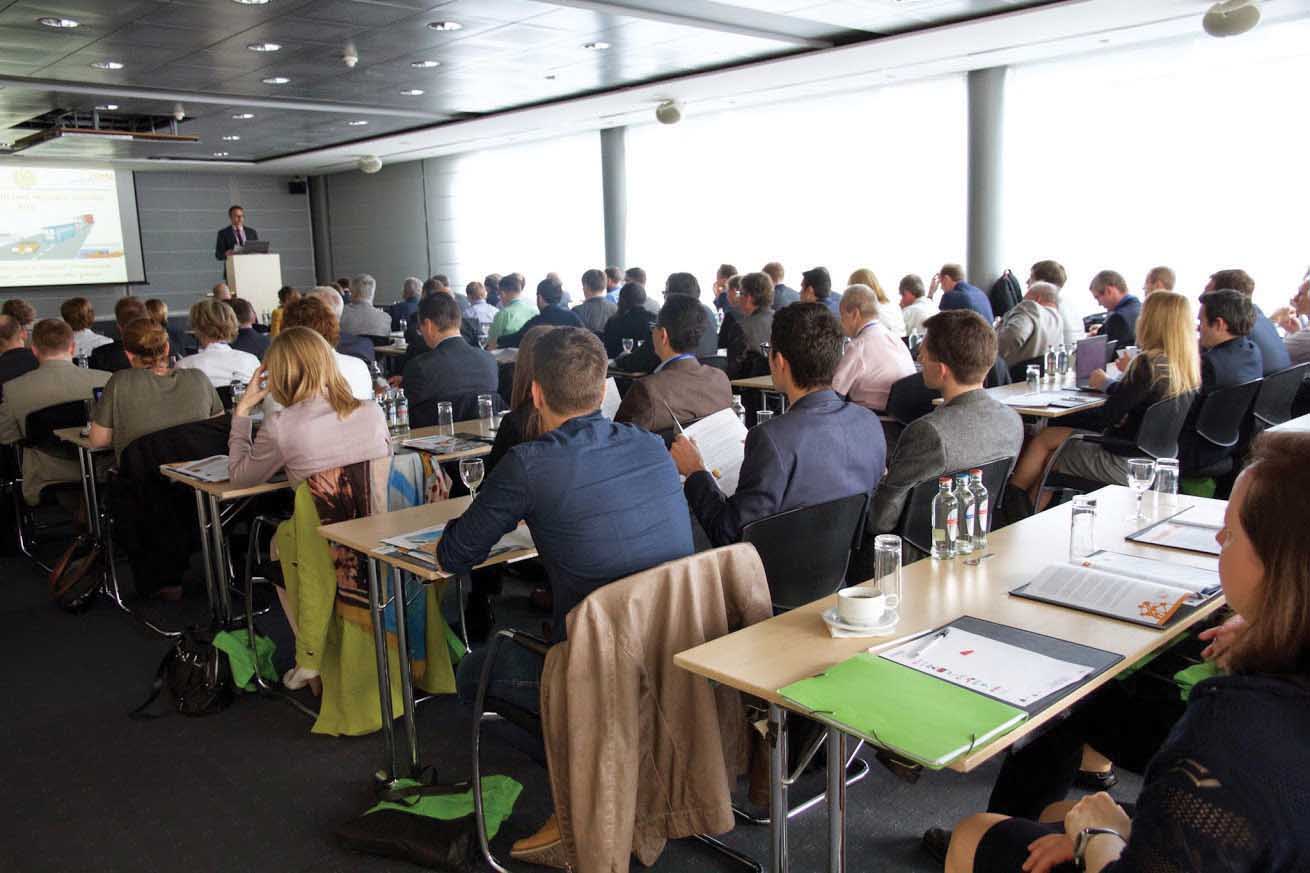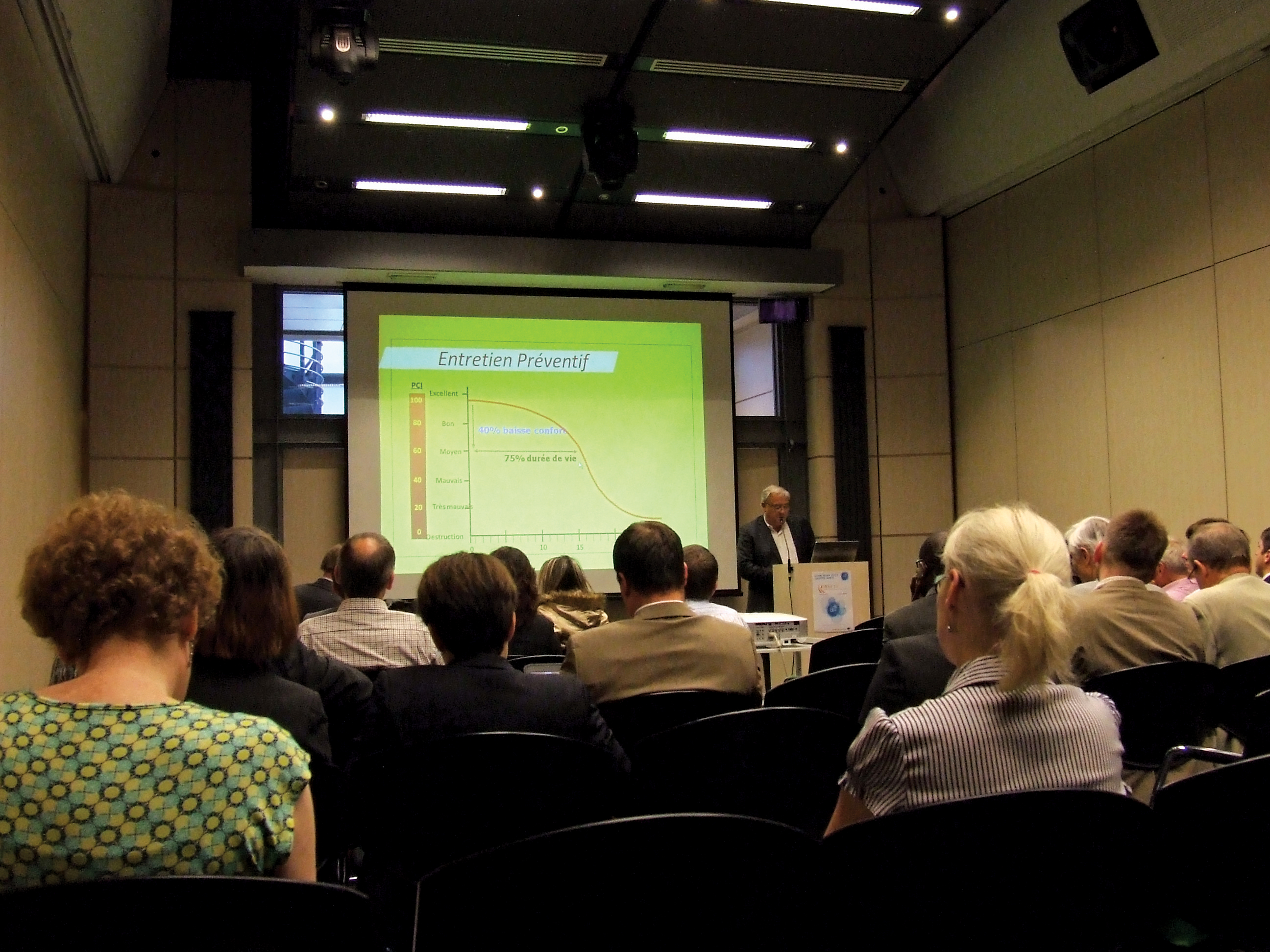
FEHRL recently held the FIRM15 event in Brussels, focussing on innovative maintenance of transport infrastructure
In all some 110 transport infrastructure research experts from Europe and beyond met for the 2015
Throughout the two-day conference, several solutions for R&D&I were presented that are in the pipeline. The debates in particular covered the challenges facing Europe, namely that little attention is given to the maintenance of transport infrastructure. While different funding mechanisms exist, these do not cover the total required costs and it is difficult to get funding for maintenance. More financial support is needed, as is expertise for construction and more knowledge about the remaining capacity of the existing infrastructure. The discussions held concluded that the scope of maintenance is broader than it used to be and the frequency higher due to the short-term timespan of infrastructure upgrades. A new maintenance framework should be found as the commercialisation and implementation of innovative solutions is too long and the actual procurement schemes are not adequate to implement innovative solutions. A change in business model is also required, which could lead to incentives. And for procurement, more responsibilities and a performance-based approach (where contractors build and maintain) are also needed, which would be similar to an insurance contract.
The debates also highlighted the issue of a possible backlog in the need for maintenance at the end of the contract and raised the question about whether the company who carried out the contract would even still exist then. According to the participants, maintenance should be seen more as an investment to drive benefits for private partners and society/community. Transport infrastructure currently drives European competitiveness while there may be no benefits retrofitted to infrastructure.
This first plenary session included high-level cross-modal speakers from industry, the National Road Authorities (NRAs), European Parliament, European Commission (EC), European Technology Platforms (ETP) and European associations. These professionals discussed how to foster the 'Innovative maintenance of Transport Infrastructure'. FEHRL President Stefan Strick from BASt opened the meeting and Thierry Goger, FEHRL Secretary General welcomed everyone. The first speaker, Gesine Meißner, MEP Transport and Tourism Committee, Group of the Alliance of Liberals and Democrats for Europe, outlined that more money is needed in Europe to pay for transport infrastructure. But Meißner added that there is never enough funding, and welcomed industries, road users and entrepreneurs to make proposals to politicians to carry out better policymaking. Ruud Smit, ERTRAC vice-chairman for Member States and Infrastructure, Rijkswaterstaat, outlined the details of the cross-modal roadmap for Transport Infrastructure innovation. Smit urged FEHRL to engage with the stakeholders to define the strategy for implementation of this roadmap. Andy Doherty, vice-chairman of the European Rail Research Advisory Council (ERRAC), Network Rail, was enthusiastic about collaboration between the modes and gave ideas on innovation that both the rail and road sectors could benefit from with 'Shift2Rail - How to boost innovation in the rail infrastructure sector?'. European policy priorities were outlined by Keir Fitch, Head of Unit, DG MOVE, European Commission and an industrial perspective provided by Miguel José Segarra Martínez, Head of the R&D&I Directorate, Dragados. And according to Kallistratos Dionelis, ASECAP Secretary General, who closed the session, there is a need to coordinate the mono-modal infrastructure management.
Session two discussed the engineering needs, challenges and solutions for 'Innovative maintenance of Transport Infrastructure'. The first technical session, moderated successively by FEHRL executive director, Lutz Pinkofsky of BASt and Manfred Haider of AIT, who is also chair of FEHRL Research Coordinators, featured an introduction by Oliver Ripke of BASt and CEDR on the needs and challenges of transport infrastructure owners in terms of innovative engineering solutions. The first proposed several R&D&I solutions such as developing/harmonising measurement methods for skid resistance, noise emission and rolling resistance of road pavements as a preparation for standardisation (Manfred Haider, AIT). The second discussed innovation in the asphalt industry (Egbert Beuving, EAPA). The third topic was design, performance, design life and sustainability assessment of warm mix asphalt mixes with high recycling rates for wearing courses, (AllBack2Pave, Anita Blasl, TUD and Davide Lo Presti, University of Nottingham/NTEC). The fourth discussion looked at tools to assess the impact of construction process quality on the performance of pavements (CONSISTEND, Jos Wessels, TNO). The development of self-powered, intelligent road studs was the fourth topic (INROADS, Martin Lamb, TRL).
The third session was a round table discussion discussing investing in innovative transport infrastructure, a critical matter at stake for competitiveness and social cohesion. Moderated by FEHRL executive director, Bob Collis of TRL, the discussion started with an introduction by Peter Haardt, head of the Concrete Bridges department of BASt entitled 'Innovative maintenance for ageing bridges and tunnels'. It featured Gerard Waldron, ARRB and FEHRL vice-president, Wim Van de Camp, MEP Transport and Tourism Committee, Group of the European People's Party, Maria-Cristina Marolda, policy officer, DG MOVE of the European Commission. It also included Pat Maher, NRA, executive board member, TD innovation of CEDR, Monika Heiming, EIM executive director, Christophe Nicodème, ERF director general, Wolfgang Steinicke, EURNEX secretary general and Kjersti Kvalheim-Dunham, NPRA and FEHRL executive director.
The fourth session discussed the needs, challenges and solutions for innovative operations maintenance of transport infrastructure. FEHRL executive director, Kjersti Kvalheim-Dunham of NPRA and Jos Wessels of TNO, who is also FEHRL research area leader design and production moderated in succession this second technical session. It started with an introduction by Pieter de Winne, Flemish Mobility and Public Works Ministry, CEDR chair of TG Research. This put forward several proposed solutions.
One was a fully portable, very accurate and reliable Bridge Weigh-in-Motion System (SiWIM, Aleš Žnidari, ZAG). A second was for automated ravelling inspection and maintenance planning on porous asphalt in the Netherlands, road measurement and monitoring (Willem van Aalst, TNO). The third suggested moving towards a single system architecture for road defects monitoring and near-miss accidents data collection (SVRAI-MIRANDA, Thierry Serre, IFSTTAR). The fourth proposed improving the requirements for high-speed inspections (HI-SPEQ, Alex Wright, TRL). A fifth looked at human factors considerations and research on traffic management measures (METHOD, Luuk Vissers, SWOV Institute for Road Safety Research). A sixth was for risk assessment of ageing infrastructures (RE-GEN, Eugene O'Brien, Roughan O’Donovan).
In the fifth session the needs, challenges and solutions for innovative governance, management and financial solutions of transport infrastructure were discussed. Monika Heiming, EIM Executive Director, both moderated this third technical session and gave the introduction. The first solution was for PPP in financing of infrastructure (ECTRI, Jose Manuel Vassallo, UPM). The second for life cycle engineering for roads, the new sustainability certification system for roads (LCE4ROADS as part of the FP7 project ECOLABEL, Carlos Martin Portugues Montoliu, ACCIONA). The third was for the business case of operation and maintenance for bridges (SAFELIFE-X, Mark de Bel, Deltares).
Held every two years in Brussels, Belgium and now in the third edition of its current format, FIRM15 for the first time opened up to all transport modes with speakers and participants from the rail sector. FIRM15 aimed to map the problems and challenges regarding the innovative maintenance of transport infrastructure, share different visions of the future of infrastructure and gain a common understanding on roles of R&D&I in infrastructure. It also intended to describe emerging R&D&I solutions and their corresponding drivers and challenges. The programme was organised into five sessions - one engaging plenary, three technical sessions including a strategy viewpoint introduction from transport infrastructure owners, and one dynamic round table discussion on 'Investing in innovative transport infrastructure, a critical matter at stake for European competitiveness and social cohesion', as well as a mini-expo of key partners and projects.








